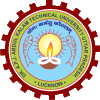Guide - Dr. Bharti Dwivedi , Professor (Retd.)
Co- Guide - Dr. Seethalekshmi K. , Professor
The use of Renewable Energy Resources (RES) in modern power systems become a new trend to address energy generation. Their sustainability attracts at increase penetration and is an alternative to decreasing traditional energy resources. High penetration of RES poses significant new challenges and benefits to the existing electricity structure. Therefore, it is necessary to address the opportunities and challenges facing of integration of these RES to the grid. These RES provides better voltage regulation and reduce losses. The technical challenges are due to changes in operational philosophy like protection systems. Increased power demands and requirements of green and clean energy encourage energy generation via solar and wind-based RESs. Wind Energy become the most prominent source of intermittent energy resources. Variable-speed wind turbines with Doubly Fed Induction Generator surge new innovation towards system stability, protection issues and power quality issues in the new generation era. Wind Turbines include power electronic converters at the grid interface. With the presence of power electronic devices have low inertia in comparison to conventional Synchronous Generator (SG). Insufficient inertia in the WTs system creates frequency instability in the grid-connected system. Moreover, Doubly Fed Induction Generator-Wind Turbines (DFIG-WTs) are more sensitive to faults. It has the problem of disconnection to the grid during fault conditions. This thesis focuses on stability related issues that mainly appear in transient fault conditions. Transient stability become a serious concern in grid-connected DFIG-WT. Low Voltage Ride Through (LVRT) is a requisite feature of Wind Energy Conversion System (WECS) for its successful integration with the interconnected power system. A lot of literature is available to support enhancing the Low Voltage Ride Through of DFIG-WF. Instead, those problems of low inertia are also existed in the system due to rotor kinetic energy during fault. This increases the frequency regulation problems in DFIG-WT under sudden disturbance. The overall DFIG system requires to fulfil the grid code requirements in terms of Low Voltage Ride Through, reactive power and active power regulation. The thesis work addresses these issues

